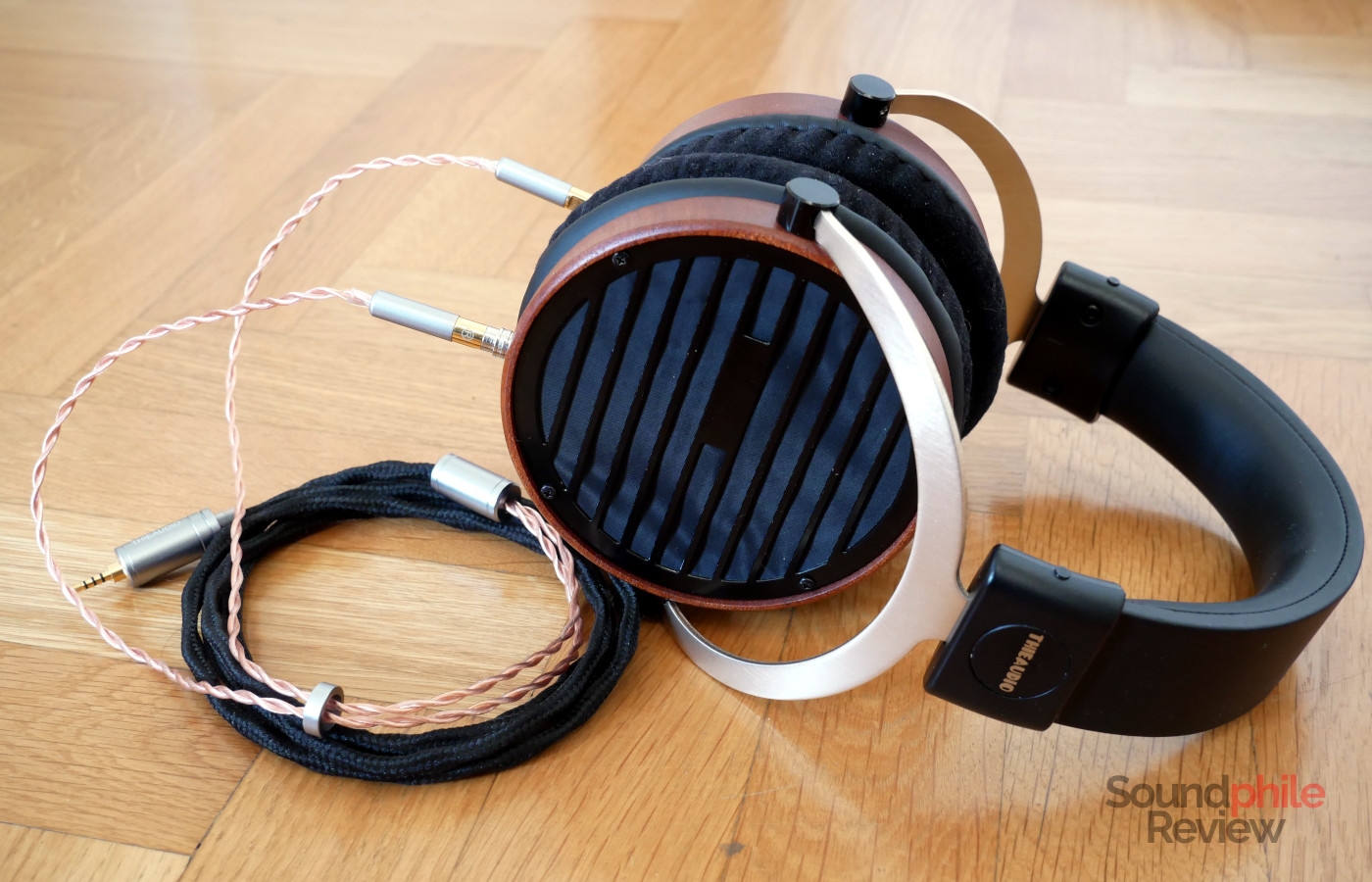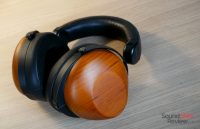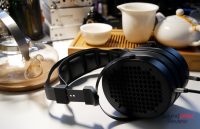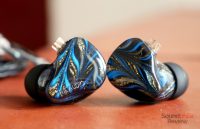The planar magnetic – or othodynamic – design principle seems to be enjoying a rapid expansion in popularity and a much wider availability of products that use it. The Thieaudio Phantom belong to the latest wave of affordable planar headphones straight out of China. They offer some very interesting features, but they’re also hampered by some issues in tuning that keep them from being truly great.
Disclaimer: Linsoul sent me a free unit for the purpose of writing this review. The Phantom is on sale at $350.
TL;DR: recap
| Pros |
Cons |
| Decently well built
Comfortable and relatively light Easy to mod |
Incoherent, recessed mids and treble
Fatiguing peak in the upmost treble region |
Rating: 7.8/10
Packaging & Accessories
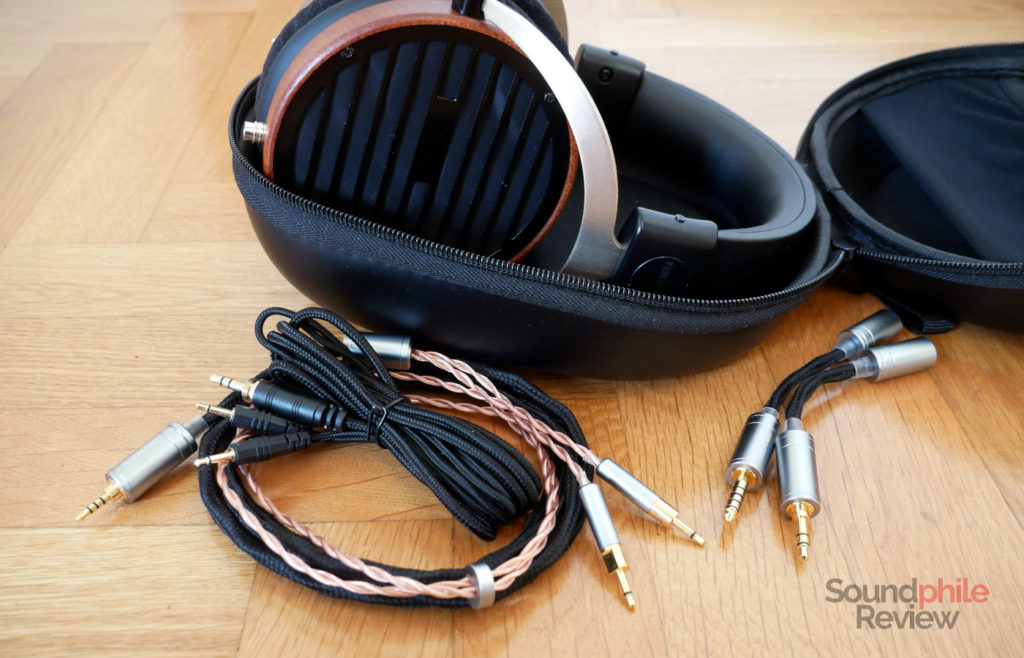
The Thieaudio Phantom come in a large (and rather unassuming) cardboard box. There’s not much to say about the packaging as it’s really bare – the box holds the headphones and that’s it. Accessories are more interesting, as the Phantom comes with a wide array of them: there’s a semi-hard travelling case, two cables (one with a 2.5 mm jack termination and the other with a 3.5 mm jack) and two adapters from 2.5 mm to 3.5 mm and 4.4 mm.
The hard case is a welcome addition, but it’s just large enough for the headphones – it’s actually difficult to close it and the zip is overly stretched when it’s closed. I would say that it’s useful for long-term storage, but not so much for actual travel as it does not really shield the headphones from any blow (it’s not really padded). It’s a good addition anyway, I’m not complaining it got included!
Design & Comfort
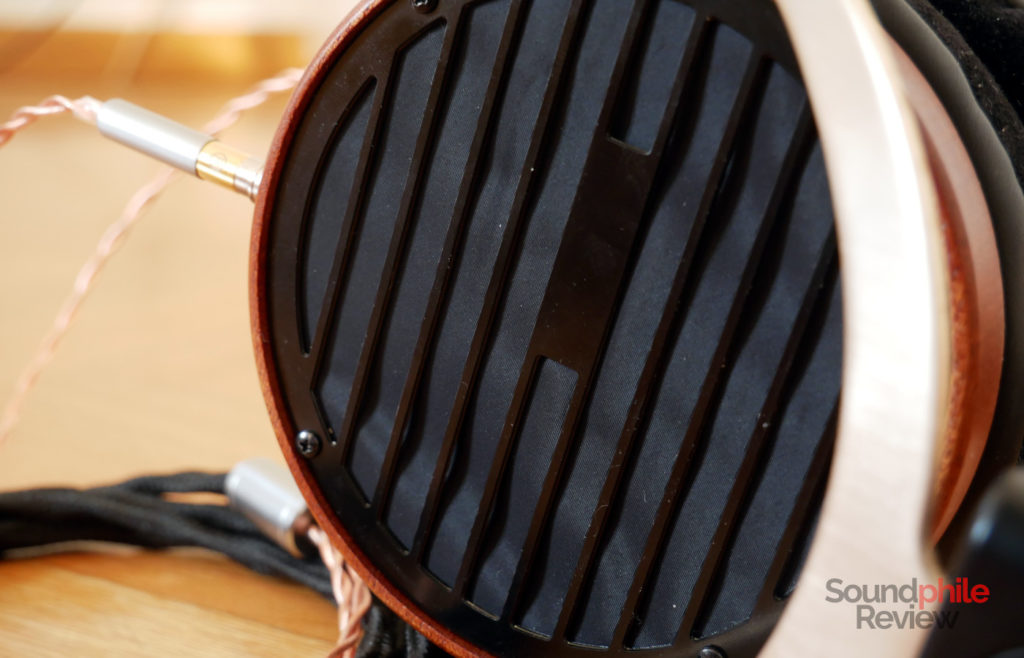
Let’s be real: the Thieaudio Phantom look like they are Beyerdynamic clones. From the shape of the gimbals to the grille on the earcups, they look like they were designed by the German manufacturer. The similarities end there though, as the Phantom has its own identity especially when it comes to materials. The earcups are in fact made out of carved pieces of solid wood which lend them a luxurious look.
Alas they’re not as refined around the details as the products by Beyerdynamic, to be honest. One example of such lack of refinement is the fabric under the grilles: it’s not perfectly cut to size so there are apparent wrinkles on it. It’s a minor detail, but it’s details such as this one that lend a product its appearance of being “premium”.
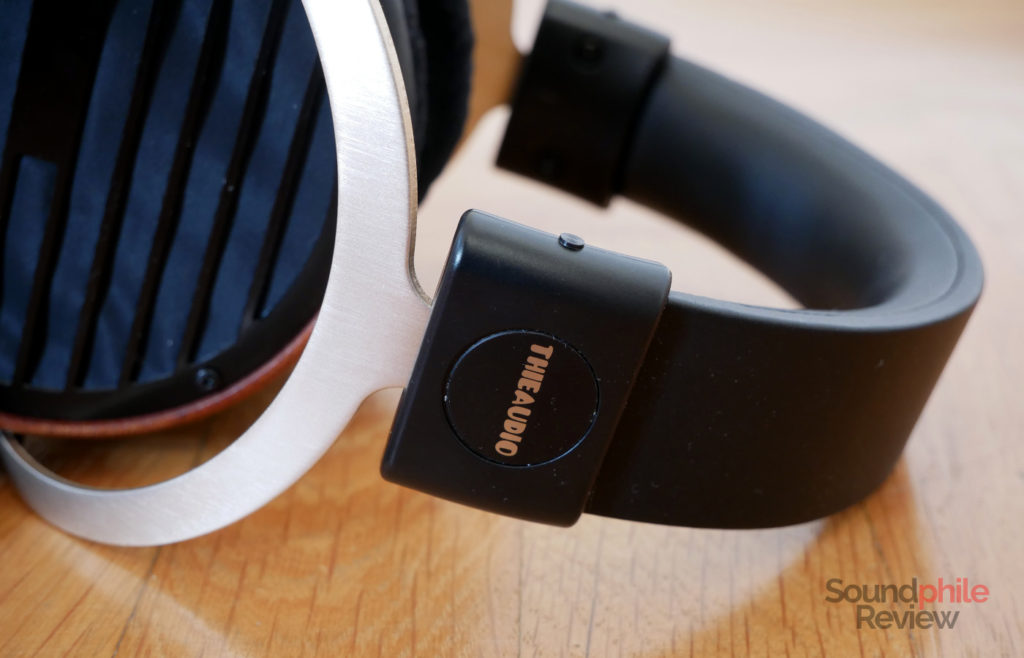
That’s because the gimbals are apparently made of steel without much refinement – they look pretty raw. The colour also doesn’t match anything else in the headphones, so they stand out (not too positively) from the rest. Design considerations aside, the main point is that they are decently well built and appear robust enough, but lack that attention to detail that would truly make them look as higher-end products.
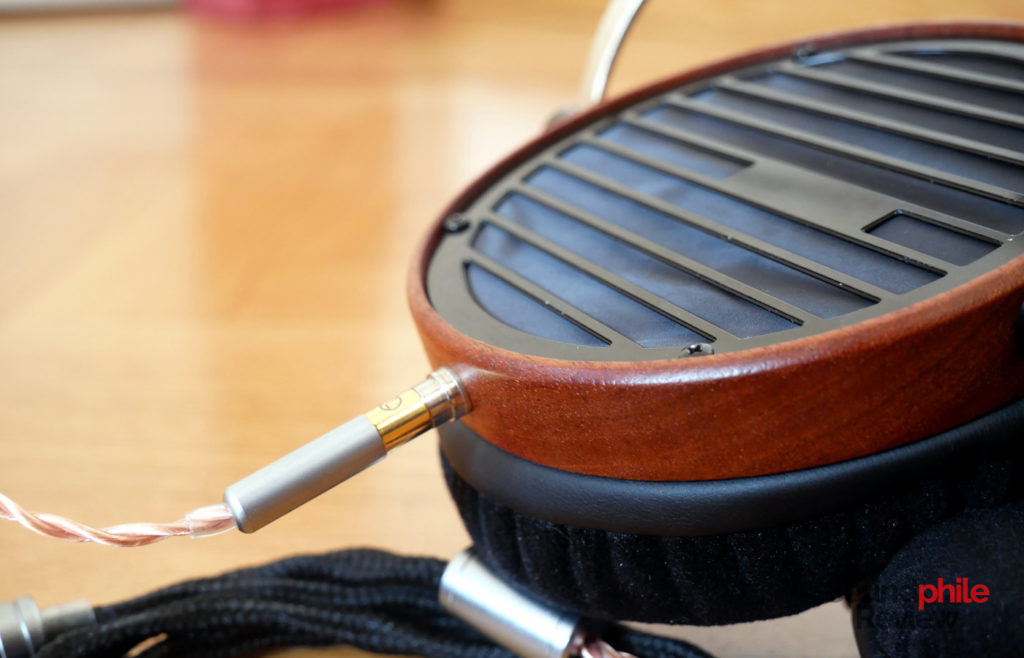
The odd thing about the Phantom is that the weight is mostly concentrated in the gimbals. The two pieces of steel are in fact the single most heavy component, with the earcups being oddly lightweight considering they’re made of wood and containing magnets. It’s odd when picking them up because one can feel the earcups being much lighter than the gimbals, though when wearing them I couldn’t feel much of that gimbal weight.
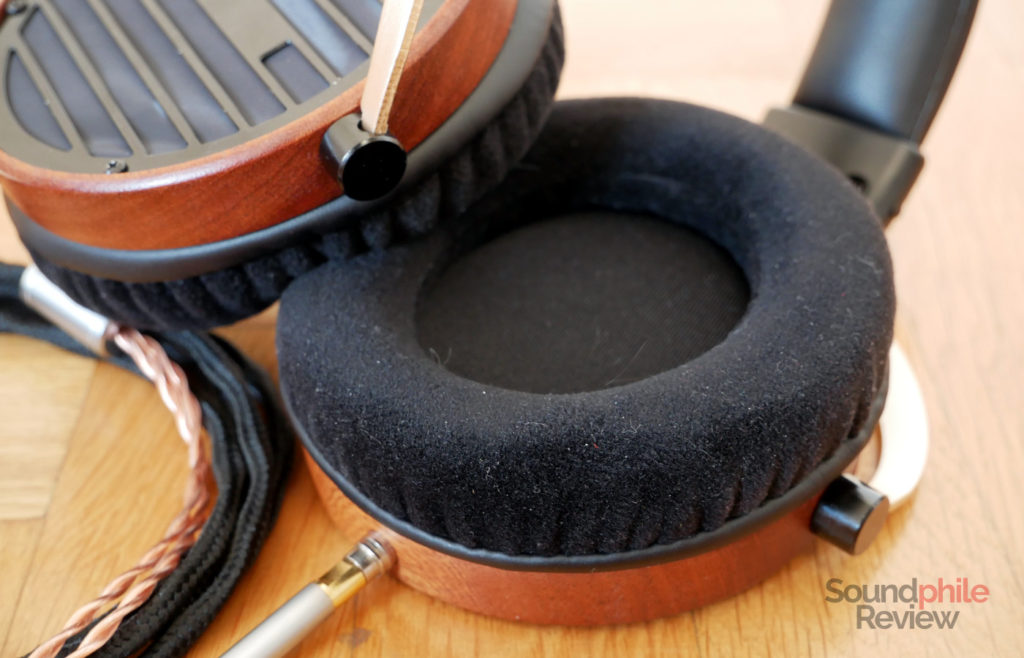
I personally do not find them too comfortable, but I’m famously extremely picky when it comes to this specific matter due to my very sensitive scalp. My girlfriend has normal scalp and she has worn the Phantom for some 6 or 8 hours a day for a few days in a row. I would therefore say that they are rather comfortable for the average person despite their 450 g weight. Comfort is incredibly subjective, so it’s hard to say anything that could apply to everyone.
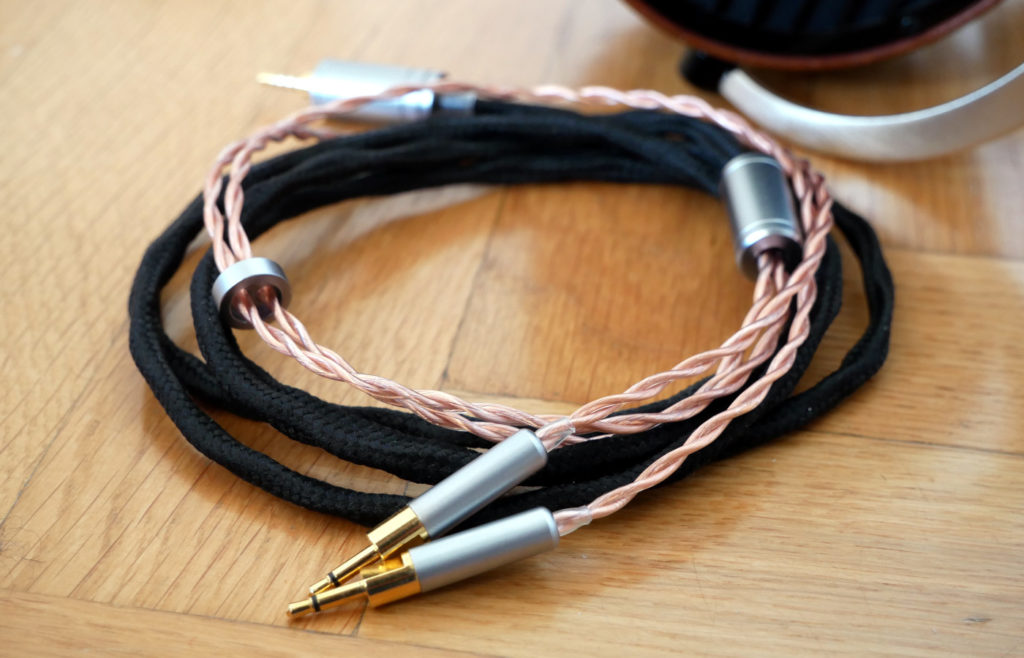
The cable with the 2.5 mm jack is one of the best stock cables I’ve tried to date. It’s not really special in any particular sense; it’s just that it has the right mix between good looks, quality of materials and softness. All housings are made of metal (jack, Y-split, jacks that go into the headphones) and so is the chin slider, the usefulness of which on full-size headphones I actually question. Between the jack and the Y-split the cable, which is made with four cores, it is covered in a black fabric sleeve. It is soft, yet it appears to be decently resistant. After the Y-split the cable, which is now two cores per channel, is covered in a thin plastic sleeve which showcases the reddish copper. There are strain reliefs on both ends of the cable, though they are fairly stiff and don’t work too well.
As I wrote in the previous paragraph about the accessories, there are a couple adapters included in the box. That’s because the default plug is a 2.5 mm TRRS jack, which can be used with balanced outputs. The included adapters are compatible with 3.5 mm jacks (non-balanced) and 4.4 mm jacks (balanced). All in all the cable works and feels great and the accessories are the proverbial cherry on top. If Thieaudio sold the cable alone, I would probably buy it as it is compatible with a variety of other headphones (e.g. HiFiMAN headphones such as the HE-560, BLON B20, Hyland Headphones Saturn One, etc).
There’s also a second cable with a 3.5 mm jack termination. This second cable is not nearly as interesting as the other one in my opinion: although it is a decent cable with good softness and a fabric sleeve that works well in protecting it, it is much less refined than the other one. In fact all the housings on it are made of plastic, whereas the other cable has all metal parts. It is also compatible with screw-on 6.3 mm adapters.
Sound & Specs
I tested the Thieaudio Phantom using various sources. Given they are open-back, I mostly drove them using desktop equipment (Topping DX7, Burson Audio Playmate, Drop + THX AAA 789), but also using a couple of DAPs (HiBy R5, Shanling M2X). In any case, I tried them using the same FLAC files – mostly from ripped CDs and therefore in 16 bit / 44.1 kHz.
Thieaudio Phantom |
| Frequency response | 5 – 50,000 Hz |
| Impedance | 47 Ω |
| Sensitivity | 93 ± 3 dB |
Thanks to their low impedance and high sensitivity, the Thieaudio Phantom are among those planar headphones that can be driven by portable sources. You don’t need a super-powerful amplifier to drive them: even a Topping NX1s can do the job.
The Thieaudio Phantom present the listener with a decently wide soundstage that has good lateral extension but no depth. It sounds as large as many other open-back headphones – it is in fact a bit larger than the HD 650, which sounds open but in a limited way – but it offers no impression of depth whatsoever, so the sound appears bidimensional. Imaging is very good as it gives each instrument its specific place on the stage, though it does not place instruments in layers of varying depths as depth is null. Instrument separation is really good, on the other hand, and it’s relatively easy to pick individual instruments.
The signature is heavily tilted towards the warm side. That’s not because lower midrange and bass are lifted (though they are a bit), but because upper midrange is heavily recessed. This makes the Thieaudio Phantom sound odd with instruments such as trumpets, sax, electric guitars and so on. Adding 2.5 dB to the 1.8 kHz – 2.5 kHz range makes an incredible difference and gives back some vividness and presence to the sound, which otherwise sounds closed (as in, it sounds as if it was played in a very small room without much space between the instruments) and muffled.
Bass is deep and physical, just as one would expect it to be on planar headphones. It extends to the lowest depths with ease, though there is some audible roll-off. Due to the way midrange is tuned, bass is often perceived as overbearing and too forward in the mix. In reality the issue is not that bass is too emphasised, but that midrange and treble are de-emphasised too much! The result is, anyway, that the sound of the Phantom is bass-centric. The very good news is that bass is almost linear from 20 Hz all the way up. This lends bass great coherence that translates in it sounding equally good whatever you throw at it. The lowest notes also allow it to sound fuller and give it much more slam: if you listen to Rammstein’s Wollt ihr das Bett in Flammen sehen you can really feel the assault of bass notes. Speaking of slam, the good speed affords the Phantom a good sensation of physical impact with percussions (e.g. in Massive Attack’s Pray for Rain). The amount of details is also really good, though it doesn’t get into micro-detail territory.
As I already mentioned, midrange has some glaring tuning issues. While it can still be plenty enjoyable with the right tracks, it still has a number of issues: first and foremost the cliff that makes the middle and upper areas of midrange (anything over 1 kHz, really) much less present than the rest, a fact that makes voices, electric guitars and other instruments appear distant and off in tonality. The first impression I had when listening to the Thieaudio Phantom was that something was missing and this impression was reinforced later when listening to them for extended periods of time. Again, some may like how the Phantom sound out of the box and that’s totally okay, but their tuning is not ideal: if we take Death’s Scavenger of Human Sorrow the lead guitar is muted, muffled, almost in the background, just like Chuck Schuldiner’s vocals. It doesn’t sound entirely right. Considerations on tuning aside, the Phantom offer a great deal of detail which expands into micro-detail territory. There’s also good physicality and good speed, which testify the good ability of the driver.
Treble is mostly recessed in the lower area, though there are a few peaks there that make it sibilant, and there’s then a lot of ups-and-downs until 10 kHz, where it drops. There’s then a very large peak in the uppermost region that can make the headphones fatiguing in the long run. I personally feel as if there was something applying a large pressure on my eardrums and this sensation gets more and more discomforting with time. It’s not all bad, though. In fact there’s a good amount of detail that is highly enjoyable as there are some micro-details, too, though they’re difficult to reach due to the tuning. I wouldn’t define treble as airy or especially open, as it’s often mostly relegated behind bass and lower midrange. It is heard when it’s needed, though, and it helps in making the sound more open. It’s still really laid-back, almost recessed in general.
I am usually against equalisation, but in this case I guess it is a perfectly valid way of getting the most out of these headphones, which would otherwise sound way less interesting. I have read that some people modded their Phantom and got much better results than with their stock features. Although I never encourage modifications of products, this time it seems like this might be a viable way to get a better product for relatively little expense (e.g. buying new earpads and removing the foam from the inside). Of course I am not responsible for any accident that might happen, so do any modifications at your own risk (and being hyper-careful!).
Thieaudio Phantom Comparisons
I compared the Thieaudio Phantom against three other planar headphones:
- Thieaudio Phantom vs HiFiMAN HE-560: the HE-560 are on a whole other level in terms of tonal balance. They aren’t plagued by the same very recessed mids, and their treble sits in the right place in the mix. Bass is probably a bit more linear on the Phantom, but that’s probably the only advantage the latter have as the quality is in favour of the HE-560 – bass is faster, more detailed, more controlled. Midrange is much more linear on the HE-560, which also offer better detail. Treble is a bit emphasised on the HE-560 compared to a perfectly neutral tuning, but it’s subtly so; as it is more emphasised than on the Phantom (except for the peak in the uppermost region on the latter) the result is that it is much easier to hear all the details and micro-details. Soundstage is slightly wider on the Phantom (but it’s also less deep), but imaging and instrument separation are way better on the HE-560.
- Thieaudio Phantom vs BLON B20: there is a $100 difference between the Phantom and the B20 and in my opinion it’s well justified by the difference in sound quality. The overall tuning is somewhat similar, with some clear differences though. The bass area is really close, with the BLON B20 being a tad more emphasised but also more detailed. Midrange is again close, with the B20 having less of a cliff (and with it being earlier on). Treble is where the two differ most profoundly, as the B20 have more emphasised treble which effectively counterbalances bass; in fact it is much more neutral-sounding than that of the Phantom, which is really laid back, and it’s also more detailed as it’s richer in micro-details. Soundstage is wider on the B20, which has worse imaging though. Instrument separation is slightly better on the B20.
- Thieaudio Phantom vs HiFiMAN Sundara: the $499 Sundara are the closest to the Phantom in the new HiFiMAN line-up in terms of price. That’s the only thing where they’re close, though. The Sundara have less bass depth and less bass presence in general, though they have a similar level of detail. Midrange is much more linear, so the middle and upper areas are more emphasised than on the Phantom, with much better clarity and coherence as a result. Treble is especially more present, though it offers a similar level of detail. Soundstage is wider on the Sundara, which also has the upper hand on imaging. Instrument separation is a tie.
Final Thoughts
The Thieaudio Phantom are apparently two headphones: the headphones that are and the headphones that could be. The product that got to the market is a mix of these two, but it’s a bit of a Frankenstein monster: bass is top-notch in quality and extension, and technical ability is great, but midrange and treble have some issues that can’t be ignored. While they’re perfectly enjoyable the way they are, they can be so much better with some equalisation or through modding. Modding can be as easy and consequence-free as using different earpads. The driver is very capable and it shows in the details and in how linear bass is. They Phantom are also well-built, although I would personally change a few things in their design (e.g. swap the steel of the gimbals for some aluminium).
All in all, though, they’re good headphones and a relatively cheap way to enter the world of planars. At about $350, they’re much less expensive than many alternatives. With very little expense – less than $50, I’d say – they can be made to sound much better. So I do recommend them, but only on condition that you know and accept that they’re not great as they are out of the box. The rating is a direct result of this: it could be higher, but they are not really the best in their stock configuration and I have to keep this into account.

